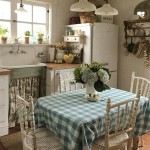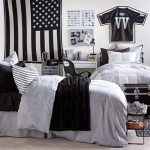Turquoise Kitchen Decor Ideas: A Comprehensive Guide
Turquoise, a captivating blend of blue and green, possesses a unique ability to infuse a space with tranquility and vibrancy. Its association with the sea and sky evokes a sense of serenity and expansiveness, making it an ideal color choice for the kitchen, a hub of activity and nourishment. The following guide explores various ways to incorporate turquoise into kitchen decor, providing examples and actionable insights to create a visually appealing and functional space.
Integrating Turquoise Through Cabinetry and Surfaces
One of the most impactful ways to introduce turquoise into a kitchen is through cabinetry. Considering the scale of cabinets within the overall kitchen design, this approach allows turquoise to become a dominant feature. Options range from painting existing cabinets to installing new ones in varying shades of turquoise. A lighter, more muted turquoise shade can create a calming, coastal atmosphere, while a bolder, more saturated hue can inject energy and character into the space.
When selecting a turquoise shade for cabinetry, consider the existing lighting and overall color palette of the kitchen. In kitchens with limited natural light, opting for a lighter turquoise can help to brighten the space. Conversely, in kitchens with ample natural light, a deeper turquoise can be used without overpowering the room. The material of the cabinetry can also influence the final appearance of the color. Matte finishes tend to absorb light, resulting in a softer, more subtle look, whereas glossy finishes reflect light, enhancing the vibrancy of the turquoise.
Another surface area ripe for turquoise integration is the kitchen island. A turquoise island can act as a focal point, drawing the eye and adding a pop of color to an otherwise neutral kitchen. This approach allows for versatility, as the surrounding cabinets can remain in a more subdued color, allowing the turquoise island to take center stage. The countertop material used on the island can further enhance the turquoise aesthetic. Light-colored countertops, such as white quartz or marble, create a clean contrast, while darker countertops, such as black granite or soapstone, add depth and drama.
Beyond cabinets and islands, turquoise can be incorporated into backsplashes. Glass tiles, ceramic tiles, or even painted shiplap can be used to create a visually striking backsplash. The choice of tile size and pattern can further customize the look. Smaller tiles arranged in intricate patterns can add texture and visual interest, while larger tiles offer a more streamlined and modern aesthetic. Consider the grout color as well; a contrasting grout color can accentuate the tile pattern, while a matching grout color creates a more cohesive and seamless appearance.
Accentuating with Turquoise Décor and Accessories
For those seeking a less permanent way to incorporate turquoise, using décor and accessories provides a flexible and easily adaptable option. This approach allows for experimentation with different shades and styles of turquoise without committing to major renovations. Several elements can be used to introduce turquoise as an accent color, including textiles, cookware, and decorative objects.
Textiles play a significant role in adding color and texture to a kitchen. Turquoise-colored kitchen towels, oven mitts, and seat cushions can provide subtle pops of color. Consider incorporating turquoise patterns into these textiles, such as geometric prints, floral designs, or nautical stripes. Rugs and runners can also serve as impactful turquoise accents, particularly in larger kitchens where floor space allows. A turquoise patterned rug can anchor the space and tie together other turquoise elements in the room.
Cookware and kitchenware offer another opportunity to introduce turquoise. Turquoise pots, pans, and utensils can be displayed on open shelving or hung from pot racks, adding both functionality and visual appeal. Turquoise-colored dishes, bowls, and serving platters can also be used to create a cohesive theme. When selecting cookware and kitchenware, consider the material and finish. Enamelware and ceramic pieces offer a classic look, while stainless steel pieces with turquoise accents provide a more modern aesthetic.
Decorative objects, such as vases, artwork, and countertop appliances, can further enhance the turquoise theme. A collection of turquoise-colored vases can be displayed on a windowsill or open shelf, adding a touch of elegance. Artwork featuring turquoise hues can be hung on the walls, creating a focal point and adding personality to the space. Smaller appliances, such as stand mixers, toasters, and coffee makers, are available in turquoise and can be used to add a pop of color to the countertops.
Combining Turquoise with Complementary Colors and Materials
The success of a turquoise kitchen design hinges not only on the selection of turquoise shades but also on the thoughtful integration of complementary colors and materials. Turquoise pairs well with a variety of colors, allowing for diverse design possibilities. Understanding color theory and material properties is essential in achieving a cohesive and balanced aesthetic.
White is a classic and versatile color that complements turquoise beautifully. White cabinets, countertops, and walls provide a clean and neutral backdrop that allows the turquoise to stand out. The contrast between white and turquoise creates a sense of freshness and airiness, making it an ideal combination for smaller kitchens. Consider using different shades of white, such as off-white or cream, to add warmth and depth to the space. The texture of the white surfaces can also influence the overall look; matte white surfaces create a softer, more subtle contrast, while glossy white surfaces enhance the vibrancy of the turquoise.
Gray is another neutral color that pairs well with turquoise. Gray provides a more sophisticated and understated backdrop compared to white. The combination of gray and turquoise creates a sense of calm and serenity, making it suitable for both modern and traditional kitchen styles. Lighter shades of gray, such as silver or dove gray, create a brighter and more airy feel, while darker shades of gray, such as charcoal or slate gray, add depth and drama. Consider using different textures of gray, such as concrete or brushed metal, to add visual interest to the space.
Wood tones add warmth and natural texture to a turquoise kitchen. Light wood tones, such as maple or birch, create a Scandinavian-inspired aesthetic, while darker wood tones, such as walnut or cherry, add richness and elegance. Wood can be incorporated through cabinetry, flooring, or accessories. Consider using reclaimed wood to add character and a rustic touch. The grain and texture of the wood can also influence the overall look; a smooth, refined wood finish creates a more formal appearance, while a rough, natural wood finish adds a more casual and relaxed vibe. Consider wood countertops for a kitchen island to complement the turquoise cabinetry.
Metallic accents can add a touch of glamour and sophistication to a turquoise kitchen. Gold, silver, and copper accents can be incorporated through hardware, lighting fixtures, and decorative objects. Gold accents add warmth and luxury, while silver accents create a more modern and sleek look. Copper accents add a touch of rustic charm. Consider using brushed or matte metallic finishes to avoid an overly shiny or ostentatious appearance. Strategically placed metallic accents can elevate the overall design and add a touch of personality to the space.
Ultimately, incorporating turquoise into kitchen decor requires careful planning and execution. Considering the scale of the space, the desired aesthetic, and the interplay of colors and materials is essential in achieving a successful and visually appealing design. By exploring the various possibilities and adapting them to individual preferences, a turquoise kitchen can be a source of inspiration and enjoyment for years to come.

Beach House Kitchen With Turquoise Decor Home Bunch Interior Design Ideas

Kevin Thayer Interior Design House Of Turquoise Beach Kitchens Kitchen Decor

Turquoise And Aqua Kitchen Ideas Decor

Beach House Kitchen With Turquoise Decor Home Bunch Interior Design Ideas

39 Best Teal Kitchen Cabinets Ideas Design

Turquoise Kitchen Decor Appliances

Turquoise And Aqua Kitchen Ideas Teal Cabinets Decor

Turquoise Kitchen Back To The 1950s Town Country Living

Turquoise Kitchen Design Cottage Tracery Interiors

Custom Kitchen With Turquoise Cabinets Home Bunch Interior Design Ideas







